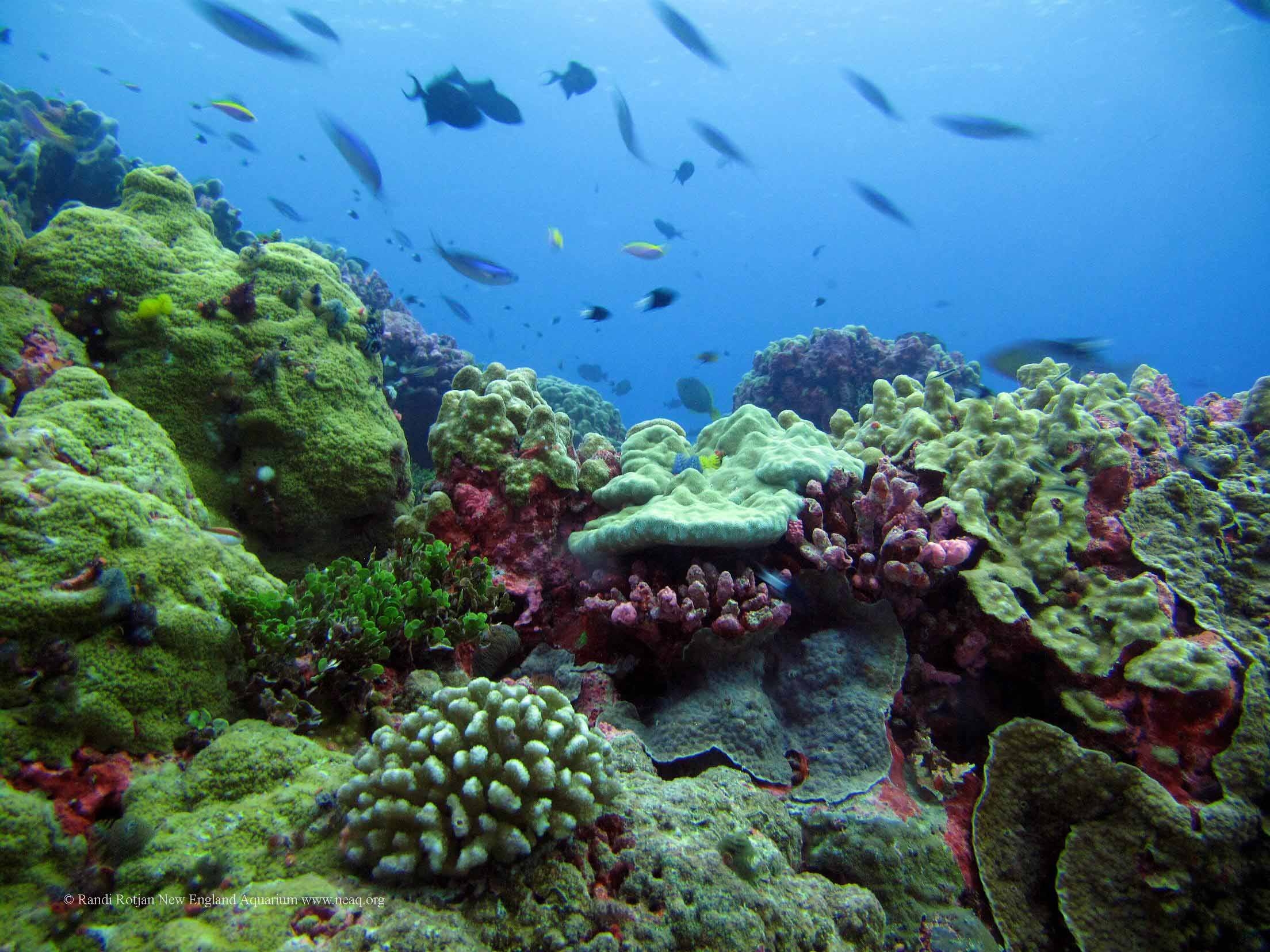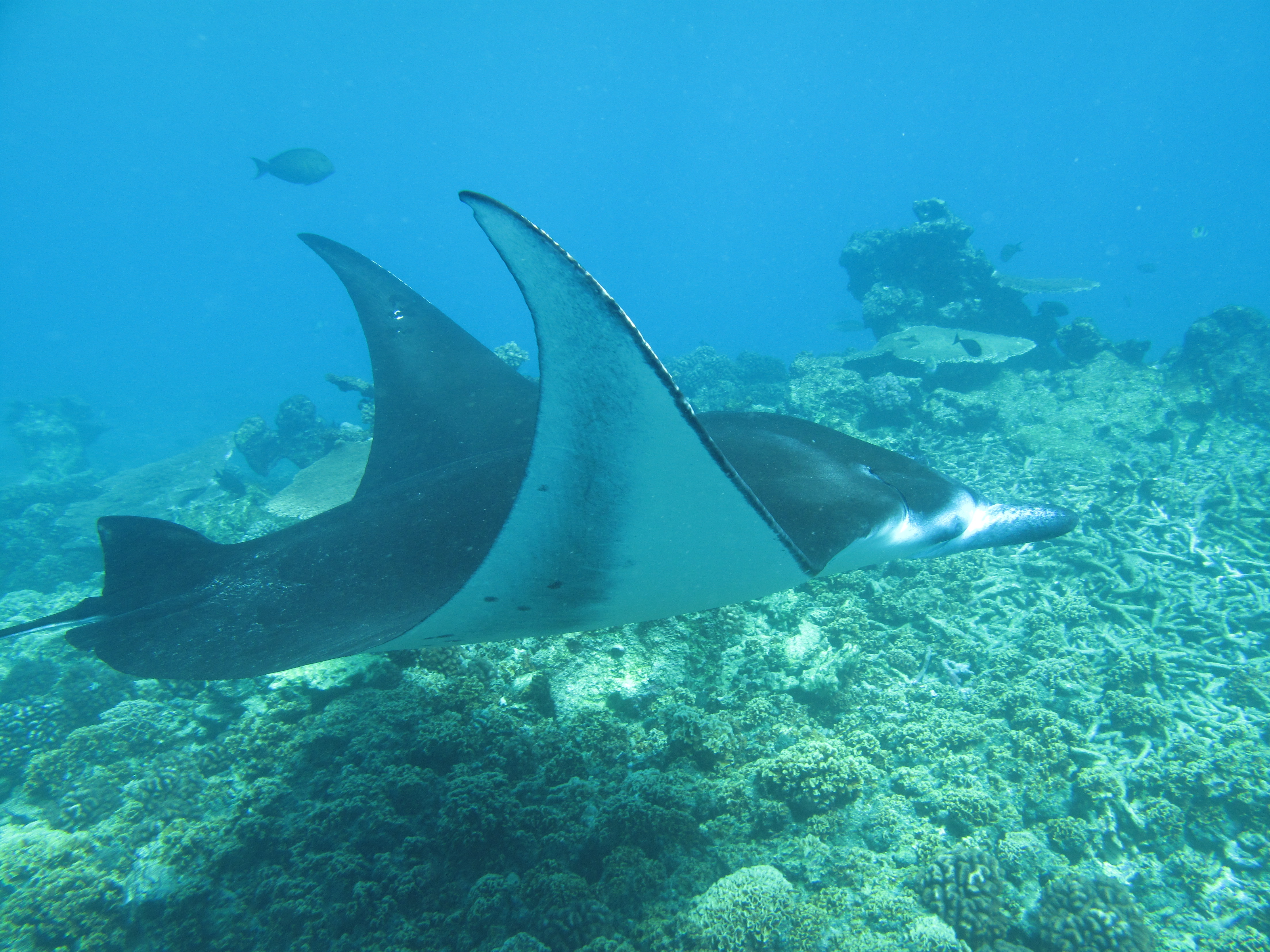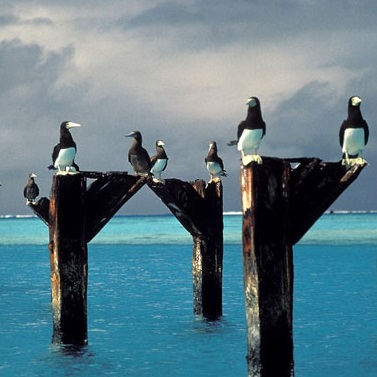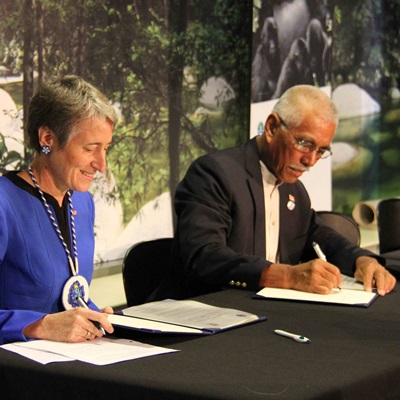Future challenges for large marine protected areas in the Pacific highlighted at World Parks Congress
As the Pacific Islands region continues to lead the way in creating large marine protected areas, the World Parks Congress has delivered a wake-up call to the rest of the world that the Pacific will require help to manage these massive areas of global importance.
Ocean management was one of the main themes of the IUCN World Parks Congress 2014, held in Sydney, Australia – the first time the once-per-decade conference has been held in Oceania.
The Congress started with the arrival of the Mua Voyage – four traditional sailing canoes sailing 6,000 nautical miles from the Pacific Islands to Sydney calling for action on ocean management. The leaders of three Pacific Island countries – Cook Islands, Kiribati and Palau – were on-board the canoes as they sailed into Sydney Harbour, asking the world to follow their lead in committing to significant protection of their nations’ marine environments.
These three nations have previously committed to establish some of the world’s largest marine protected areas. Kiribati has established the 408,250-square kilometre Phoenix Islands Protected Area, now the largest and deepest UNESCO World Heritage site in the world. Palau has committed to protecting 80% of the nation’s exclusive economic zone (EEZ) – approximately 500,000 square kilometres.
Cook Islands is in the process of establishing ‘Marae Moana’, a marine park covering 1.1 million square kilometres. At the Congress, the Prime Minister of Cook Islands, Hon. Henry Puna, committed to expand Marae Moana over the medium-term to include the Northern Group Islands. Once this occurs, Marae Moana will encompass the entire EEZ of the Cook Islands – approximately 2 million square kilometres.
Large marine protected areas are also being established in Pacific Island overseas territories. New Caledonia has committed to establishing the Natural Park of the Coral Sea, a marine park encompassing its entire EEZ of approximately 1.3 million square kilometres. This year, the United States announced the expansion of the Pacific Remote Islands Marine National Monument (PRIMNM) to approximately 1.06 million square kilometres. French Polynesia, with an EEZ of approximately 4.77 million square kilometres, is expected to soon establish its own large marine protected area.
Given the sheer size of these commitments, how are these small countries and territories scattered across the vast expanses of ocean – some of them amongst the least developed states in the world – going to manage these marine areas to ensure they actually are protected?
The answer lies in partnerships between international development agencies and the Pacific Island states, according to IUCN Regional Director for Oceania, Mr Taholo Kami.
“It’s an alert on oceans, an alert to all the international regional organisations and development partners that, in the next five years, we will see some of the biggest calls for ocean management – whether in protected areas or in Pacific Island EEZs. This is likely to exceed 10 million square kilometres. This can only be dealt with by a complete rethinking of partnership and delivery of assistance with development partners” said Mr Kami.
This is particularly important in the context of the Pacific Ocean’s role in sustaining human life. According to the Food and Agriculture Organization of the United Nations, one billion people rely on marine fish as an important source of protein. The Pacific Ocean provides much of this protein source, but overfishing continues to deplete fish supply. Marine protected areas are intended to remove fishing pressure and allow fish stocks to recover – however unregulated and unrestricted fishing activities threaten this.
Compliance and enforcement of unregulated and unrestricted fishing activities within the marine protected areas poses the greatest challenge.
Progress is already underway, with the signing of a cooperation agreement between Kiribati and the United States at the World Parks Congress. Kiribati’s Phoenix Islands Protected Area shares a common boundary with the United States’ PRIMNM, with the two protected areas referred to as the ‘Phoenix Ocean Arc’. The President of Kiribati, His Excellency Anote Tong, and the US Secretary of the Interior, Mrs Sally Jewell, signed the cooperative management arrangement, which may include activities such as law enforcement, scientific research, removal of shipwrecks, conservation of seabirds, and eradication of non-native species (such as rats) from the remote atolls.
Partnerships that provide equipment, expertise and funding are needed to help Pacific Island countries and territories to maintain the integrity of their marine protected areas for the benefit of all.








